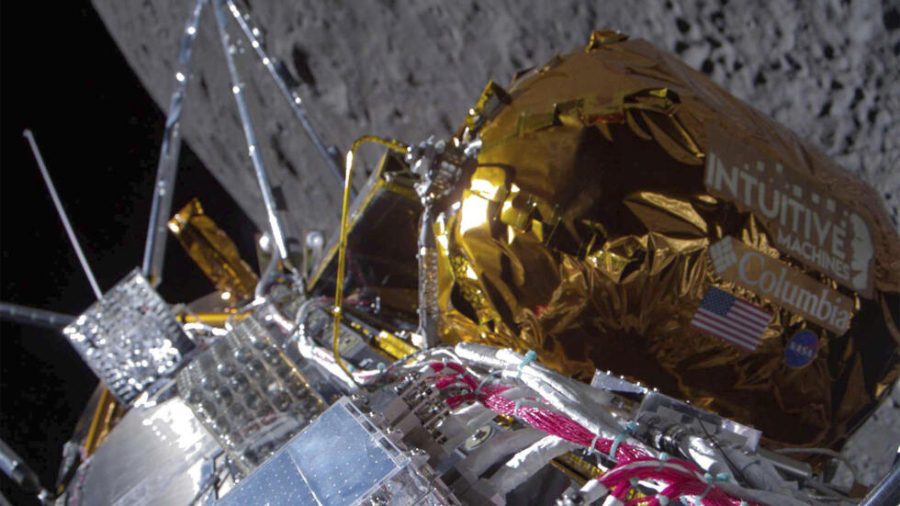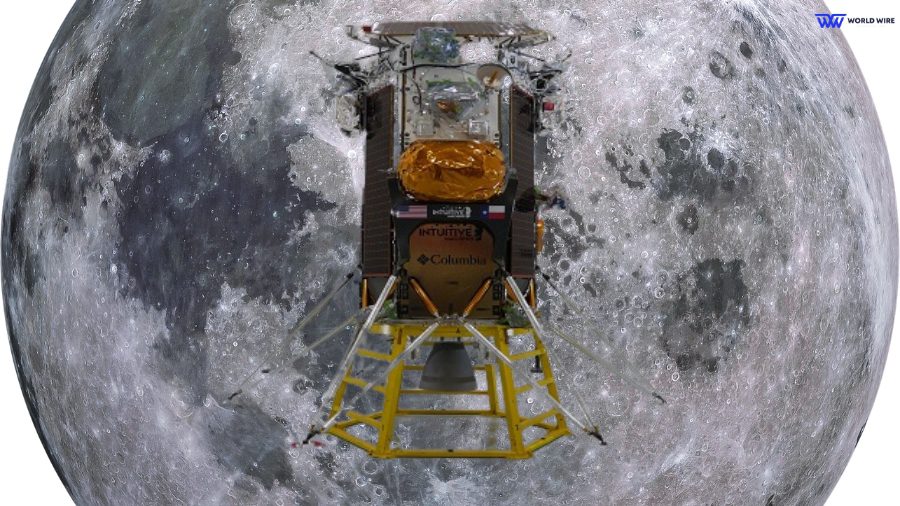The first U.S. lunar landing in almost half a decade occurred on Thursday. A spacecraft owned and launched by the Texas-based business Intuitive Machines landed close to the moon’s south pole.
Let’s read the news and find out more.
US First Private Spacecraft Moon Landing in 50 Years
Stephen Altemus, the current president and CEO of the company, was a co-founder of Intuitive Machines in 2013. He was previously the deputy director of NASA’s Johnson Space Center in Houston.
In a joint webcast of the landing from Intuitive Machines’ mission operations center in Houston, the business and NASA commentators announced that the spacecraft, which was named Odysseus, the uncrewed six-legged robot lander, had made a landing at about 6:23 p.m. EST (2323 GMT).
NASA celebrated the landing as a significant step toward its goal of deploying a group of commercially flown spacecraft on scientific exploratory missions to the moon.
However, there were initial concerns about communication issues with the spacecraft after the landing on Thursday, raising the possibility that the vehicle was damaged or hindered in some way.
Following a radio blackout, reestablishing contact with the spacecraft, which was located some 239,000 miles (384,000 km) from Earth, and ascertaining its final location took some time.
According to the webcast, when contact was eventually restored, the signal was weak, indicating that the lander had landed but leaving mission control instantly unsure of the exact state and orientation of the spacecraft.
Also, read “Google Launches Gemini AI for Workspace Tools at $20“
Nevertheless, Thomas Zurbuchen, a former NASA science chief who oversaw the development of the agency’s commercial moon lander program, stated that the weak signal might be due to the landing near the crater wall or something blocking the antenna.

He said that while the landing was successful, it was “a major intermediate goal, the mission’s goal is to do science, and get the pictures back and so forth.”
Tim Crain, the mission director of Intuitive Machines, was overheard saying to the operations center, “Our equipment is on the surface of the moon, and we are transmitting, so congratulations, I.M. team; we’ll see what more we can get from that.”
Later that night, on the social media site X, the business announced that flight controllers “have confirmed Odysseus is upright and starting to send data.”
NASA Administrator Bill Nelson praised Thursday’s accomplishment as a “triumph,” declaring that “Odysseus has taken the moon.”
According to the webcast, the spacecraft came to rest at a crater known as Malapert, close to the moon’s south pole. A week after its launch from Florida and one day after reaching lunar orbit, the spacecraft made a landing.
Since Apollo 17, NASA’s final crewed moon mission, which included astronauts Gene Cernan and Harrison Schmitt, in 1972, Thursday’s landing marked the first controlled descent to the lunar surface by a U.S. spacecraft. Odysseus is the latest star of NASA’s CLPS program.
Also, read “Elon Musk: First Neuralink User Controls Mouse with Thoughts“
Only four other nations’ spacecraft have made lunar landings: the former Soviet Union, China, India, and, most recently, Japan. The only country that has sent people to the lunar surface is the United States.







Add Comment